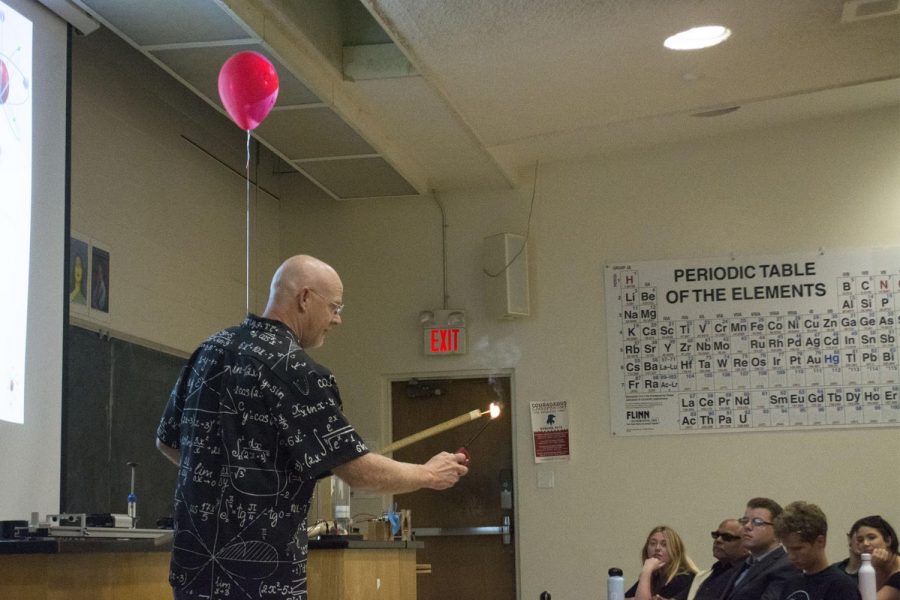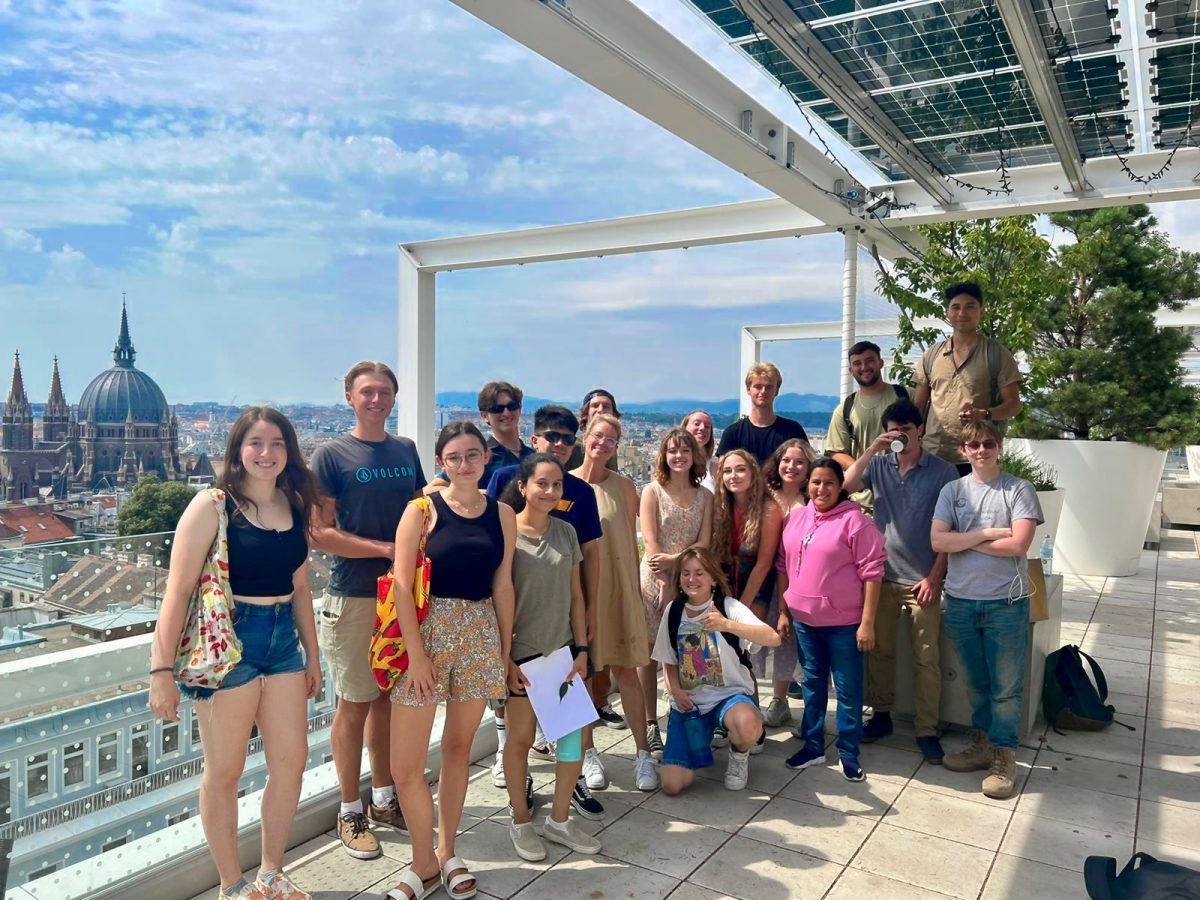Are advancements in nuclear fusion imminent or will it always remain in the future? City College Physics professor Mike Young is optimistic that a breakthrough is near at his speech hosted by the Futurism Club.
“It’s been 10 years away for 70 years,” said Young when describing the slow progression that nuclear fusion has made. “If we can get it to work, it would be a game changer.”
Young kept a crowd of City College students and Futurism Club members hooked on energy science by setting off hydrogen-filled balloons with a touch of fire, rocket-propelled chairs, and heated pieces of magnesium in Physical Science Room 101.
Young explained the many ways we create energy before diving into the benefits that fusion energy can bring to society by creating combustion.
“As we go into the future we need to figure out how we are going to get more energy,” he said.
The most significant benefit that Young points out about nuclear fusion energy is that it does not produce any harmful emissions that contribute to global warming.
He points out that our current main source of energy, fossil fuels, is being consumed at a larger rate every year.
“It took the earth 10 million years to create the number of fossil fuels we consume in a year,” said Young. “At best we have about 400 to 500 years of fossil fuel energy left.”
On average, one kilogram of fusion fuel would equal to 11,000 barrels of oil and 3.5 million kilograms of coal adding that there is enough fusion fuel in the world to last for 30 million years.
Young also addressed how fusion energy is able to surpass current available renewable energy resources such as solar, wind and even current nuclear alternatives.
He said that the issues that come with solar and wind require a lot of space to operate and that they are very dependent on weather conditions.
But with current nuclear technology, the stakes are even higher with nuclear fission being the separation of nucleons in order to create energy, which produces high levels of radiation.
“Everything you do in a nuclear plant has to be held back,” said Young. “ It wants to run on its own.”
Even though fusion energy seems to be the clear alternative to what we use now, it still faces some hurdles, for example, trying to fuse and contain two main isotopes to achieve nuclear fusion, deuterium, and tritium.
Current technological advances in fusion energy have been tested by governments in remote sights in Europe and China, where scientists found out a 100 million degrees Celsius is required to create a fusion reaction for a short amount of time.
“Hopefully we will be able to have achieved nuclear fusion in 10 years,” said Young.







![On Feb. 12 the Multimodal Lab held a poetry open mic for students, staff and faculty in Santa Barbara, Calif. “I'm glad there is space here at this school [...] that people can talk about what they are feeling on the inside and whatever feelings they’ve got,” Russom said.](https://www.thechannels.org/wp-content/uploads/2025/02/MGSMultimodal-3-1-1200x800.jpg)






